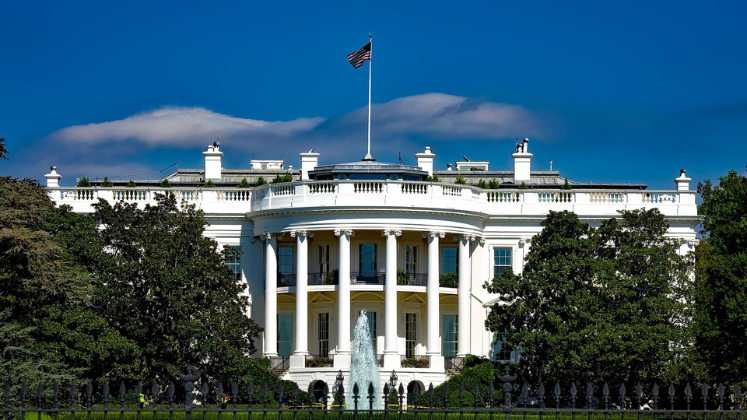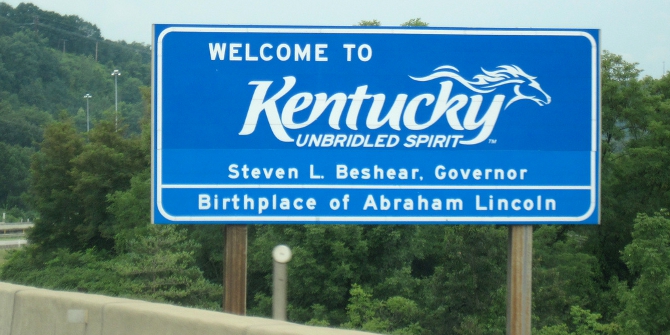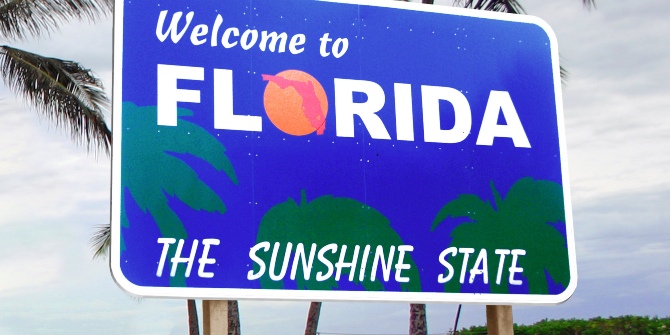In The Modern Presidency: Six Debates that Define the Institution, Michael A. Genovese examines competing explanations of the different factors that can make or break a presidency in the US context. This timely book offers a balanced analysis of what makes presidents effective, writes Kyle Scott.
The Modern Presidency: Six Debates that Define the Institution. Michael A. Genovese. Columbia University Press. 2022.
 Find this book (affiliate link):
Find this book (affiliate link):![]()
In The Modern Presidency: Six Debates that Define the Institution, Michael Genovese examines what makes some US presidents great, some awful and others forgettable. Across five chapters, he takes up competing explanations of what makes or breaks a presidency: power or persuasion; individual or institution; a unitary or limited executive; character or competence; and skill or opportunity. The conclusion is that everything matters. While this may sound like an equivocation, The Modern Presidency is a book that provides sober and realistic treatment of complex issues that are too often oversimplified.
Genovese is at ease with his prose and confident in his handling of the material. He is an accomplished scholar who is writing not to impress, but to inform. Genovese uses Machiavelli to create a rubric for evaluating presidents, recommending that we think in terms of Virtu (skill), Occasione (context or opportunity) and Fortuna (luck). A president with a high level of Virtu can have their efforts thwarted by a divided Congress (Occasione) or an exogenous shock over which they have no control (Fortuna). Meanwhile, a president whose party has a large majority in Congress, or who enjoys a favourable economic environment during peacetime, will not need as much Virtu to be an effective president.
Chapter One takes up the question of whether a president is successful due to their ability to persuade or because of the power embedded within the office. Genovese argues that on domestic matters the president must be skilled at persuasion but can use their power on international matters. Genovese concludes the chapter, as he does each one, with a section entitled ‘My View’, which is a helpful addition. What makes an effective president, according to Genovese, is the ability to assess a situation and know whether to wield power or try to persuade.
Chapter Two takes up the debate of whether the institution or the person determines the effectiveness of a president. Genovese sets up the discussion by recalling a question a professor once asked him: ‘Do leaders matter?’ I ask my own students a similar question: ‘Could anyone have been Abraham Lincoln?’ Genovese concludes that great leaders use the tools at their disposal and adapt to changing circumstances as needed. Drawing the distinction between a president —a person — and the presidency —an office — Genovese demonstrates how managing a great team is the hallmark of an effective leader.

Image Credit: Image by David Mark from Pixabay
The third chapter examines whether the Framers of the US Constitution created a unitary or limited president. The theory of the unitary executive holds that the president has almost unlimited authority. The unitary executive theory gained attention in the press and scholarly literature during George W. Bush’s presidency as it was used to justify his administration’s ‘War on Terror’. Genovese combats the unitary executive theory by placing Article II of the US Constitution in its proper historical and legal context. Genovese posits that conservatives have been the prime culprits in perpetuating this theory while only briefly mentioning the extraconstitutional authority invoked by progressives like Franklin D. Roosevelt and by Thomas Jefferson and Andrew Jackson in the early days of the republic before the presidency was well defined.
While Genovese recognises in the introduction that citizens want the president to take bold action when they agree with what the president is doing and criticise the president for using similar means when the president acts against their preferences, he ignores that element here. I had the sense that he disagrees with the unitary executive theory because he disapproves of the conservatives who have invoked it most recently — Ronald Reagan, George W. Bush and Donald Trump — and not because he thinks the theory is bad for the country. It would have been helpful if he had used a more evenhanded approach by pointing out that the trend since the founding has been for a more expansive and powerful president regardless of party.
‘Character or Competence?’ is the question examined in Chapter Four. It is a practical question since voters may have to choose between someone with the right skills who is corrupt and someone with good moral standing but an insufficient skillset. The challenge in this chapter is how to define and then measure character and competence. Chapter Four provides examples of presidents who the author assumes have certain characteristics, but without a definition of these and objective metrics, these are unreliable and do little to answer the question.
Genovese poses the question of whether Lyndon B. Johnson was successful at passing landmark legislation because he was a masterful politician or because his party carried a large majority in Congress. The question matters as to whether skill or opportunity dictates the effectiveness of a president. Genovese concludes Chapter Five by saying that both matter. His evidence seems to suggest that a skillful president will be more effective than an unskilled president if confronted with the same set of circumstances.
The final chapter makes the argument that the US should advocate for presidents who will uphold the values of liberal democracy. Genovese is concerned that the US is sliding into an illiberal democracy: a country with democratic institutions that pursues illiberal ends. Genovese ties the problem to a loss of faith in government that is a byproduct of ineffective governance. The problem the reader faces is that Genovese offers broad statements. At the least, the recommendations he puts forth should be stress-tested for their possible consequences. For instance, Genovese would like to streamline, and thus weaken, the separation of powers that defines the US Constitution. Genovese recommends fast-tracking legislation and putting the President, House and Senate on synchronised four-year terms rather than staggering terms and term lengths. Genovese would also like to eliminate the Electoral College and have direct presidential elections. Yet, the latter would most likely promote populism, which Genovese criticises in his condemnation of Trump.
What is equally problematic here is that Genovese ignores the formal apparatus in which the president operates — an apparatus that he discusses in previous chapters. In the US there is a congress and judiciary at the national level and there are also fifty states with their own executive branch, legislature and judiciary. It’s an odd argument that reforming the executive branch is the most effective solution to the US sliding into illiberal democracy. It is unclear why such an outsized impact should be attributed to the president alone.
The Modern Presidency is nonetheless a timely book as the nature of the US presidency is in flux. This book will be a great starting point for university students and it is also appropriate for a general readership as it is well-written, jargon-free and addresses issues dominating US media.
Some readers may be frustrated that the answer in each of the first five chapters is: ‘it depends’. But reality does not conform to easy explanations and the author should be commended for not trying to make it so. Genovese should be read for his clear-eyed treatment of the debates and for providing a balanced analysis of what makes presidents effective. A book such as this can play an important role in informing citizens of what powers the president has and what Americans should expect of the president. If citizens were more informed about their government, perhaps Genovese would not have to ask the president to save liberal democracy in America.
- This review first appeared at LSE Review of Books.
- Please read our comments policy before commenting.
- Note: This article gives the views of the author, and not the position of USAPP – American Politics and Policy, nor of the London School of Economics.
- Shortened URL for this post: https://bit.ly/3YIxTaF






